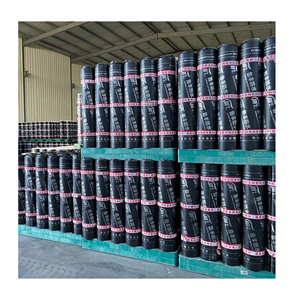
All categories
Featured selections
Trade Assurance
Buyer Central
Help Center
Get the app
Become a supplier

(252 products available)








































Referring to the highway maintenance and construction, a sealant is a material for filling cracks, which is a constituent of hot melt asphalt. There are several types of sealants, as mentioned below, using different polymers. Sealants are grouped into the following categories:
Polymer-Modified Asphalt Sealants
This sealant also contains polymer additives. The sealant enhances the thermal variation. The sealant makes the sealant more elastic and flexible. This sealant resolves sealant problems. The sealant makes it desirable for use in different climates.
Rubberized Asphalt Sealants
Asphalt Cement has added concrete rubber to provide sealants with additional flexibility and durability. This sealant was designed to help it withstand thermal cracking. Also, it is ideal for use in conditions with a high temperature.
Fiber-Reinforced Sealants
Fiber sealants are additional fibers, providing better crack resistance. The fibers are made from glass or synthetic materials. The sealant was designed to improve strength and reduce chances of wear and tear. Fiber reinforces sealants suitable for high traffic areas where require structural integrity.
NQ-Modified Asphalt Sealants
NQ-modified asphalt sealants have added new materials. The sealant increases range temperature of the sealant. The sealant ensures that it bonds well with the pavement. It provides long-lasting protection against cracking.
Pavement Maintenance and Repair
The main use of hot melt asphalt sealant is in maintaining and repairing pavements, which are usually used in sealing cracks in roads, driveways and parking lots. The sealant helps to prolong lifespan of pavement. It also prevents further deterioration from water infiltration and weather elements. Sealant is used in repairing potholes to provide a smooth wear surface.
Roofing Applications
Sealants are used in maintenance and repairs in low-sloped roofs. Hot melt asphalt sealant is used for bonding and waterproofing. Sealants help to provide a protective barrier against leaks, which occur mostly from rain and melting snow. Sealants maintain roof integrity and prevent moisture infiltration.
Bridge and Parking Structure Maintenance
Sealants are commonly used in the maintenance of bridges and other structures made of concrete. Also, the sealants protect them against water and chemicals. They assist in helping the sealants bond with the pavement. Sealants are then used to prevent reinforcement of cracking. Sealants are used in parking structures. They are particularly effective where there is heavy load and traffic concentration.
Bike and Walking Path Construction
With the increasing popularity of biking and walking paths, sealants help to enhance features durability. Sealants provide waterproof and smooth finish. This sealant is also ideal for recreation use and lesser traffic than roads or highways.
Airport Runway Sealing
The use of sealants in airport runways is critical to performance and safety. Hot melt asphalt sealants help to fill cracks formed on runways. They prevent further erosion and deterioration. Besides, sealants provide smoother landing and take-off surfaces for aircraft. Sealants are integral in the overall maintenance of airport infrastructure.
Waterproofing for Foundations and Basements
A hot melt asphalt sealant provides a protective barrier against water trying to penetrate the foundation of structures. This is especially important in basements. It prevents water damage. It also prevents structural integrity and molds and mildews.
Some of the important preparation steps for installing hot melt asphalt sealant are cleaning the surface and ensuring no debris or water is there. Cracks are filled to the level of the pavement. The cleaned area is sealed around the edges of the sealing material.
The sealing machine or melter is loaded with sealant materials and heated to the required application temperature. After heating, the sealant is poured into the driveway or crack in a uniform layer.
The sealing machine is slowly driven over the driveway to spread the sealant. The sealant is integrated into the asphalt. Proper sealant application is checked by looking at the sealing consistency. The newly sealed driveway is allowed to cure for a period before driving over it.
Regular maintenance and repair help to keep the sealing effective. Inspect sealing regularly for cracks, wear or areas. Clean the sealed areas regularly to remove dirt.
Reapply sealing wherever necessary to maintain effectiveness.
Buy quality sealing products and materials only. Use sealant specific to the application and environment.
Sealant Composition: sealants made with high-quality asphalt binders and polymer modifiers, provide the desired flexibility and durability. Sealants that contain fillers and additives that degrade their properties are avoided.
Weather Resistance: Sealant's resistance to extreme storms, temperatures and UV exposure is assessed, which is vital for performance. Sealants that lack the ability to withstand weathering are avoided.
Thermal Range: Sealant that performs well in both high and low temperatures is ideal, as expansion and contraction depending on temperature is a factor. Sealants that lack this feature are avoided.
Load-Bearing Capacity: Sealants that can withstand heavy traffic and structural support in driveways, roads and airport runways are selected. Sealants that demonstrate low load-bearing capacity are avoided.
Life Expectancy: Sealants that offer longer protection against cracking, clement weather and wear are picked for profitability. Sealants that wear out too soon are avoided.
Proper Handling: Sealant users should always handle the sealant well under recommendations. Sealant burns can occur when the sealant is handled without caution.
Fumes and Inhalation: Users are advised to work in well-ventilated areas, as asphalt sealant fumes are harmful to health. Inhalation can cause respiratory problems.
Personal Protective Equipment (PPE): PPE should always be worn during sealant application. PPE prevents skin contact and inhalation. PPE is gloves, masks and goggles.
Environmental Impact: Manufacturers should always follow all regulations regarding disposal and spill management precautions to reduce environmental effects.
Fire Hazard: Since hot melt sealants are flammable, it is ideal to keep away from open flames and high heat.
A1: Hot melt asphalt sealant is a sealing compound used to fill cracks and damaged areas of asphalt surfaces. For the sealant to work, heat has to be applied to melt it, then poured into the cracks. The hot melt sealant, upon cooling, adheres to the asphalt and forms a flexible, durable repair that helps prevent further damage from water, weather and traffic.
A2: Hot melt asphalt sealant creates a strong, waterproof bond that effectively fills cracks and holes. Easy to apply, it can be heated and spread smoothly over damaged areas. Quick to set, it's ideal for fast repairs. The sealant also resists extreme temperatures, making it suitable for various weather conditions. Flexible and durable, it allows asphalt to expand and contract without cracking, ensuring long-lasting protection.
A3: Hot melt asphalt sealant is typically used for pavement maintenance and repair, roofing application, bridge and parking structure maintenance, bike and walking path construction, airport runway sealing, and waterproofing foundations and basements.
A4: When it comes to quality considerations, the sealant composition, weather resistance, thermal range, load-bearing capacity and life expectancy should be checked. For safety, proper handling, ventilation while applying, wearing PPE, management of environmental effects and fire hazards are some of the safety measures of hot melt asphalt sealants a user should take.